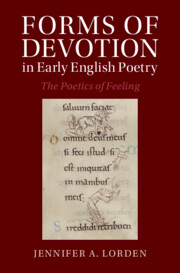From Old English to Middle English inflection is gradually lost. It is assumed that this is mainly due to phonological and syntactic changes. This article, however, argues that the loss of inflection is not a linear process but new systems can emerge, and that morphological changes play an important role. The nominal inflection of the Lambeth Homilies – an Early Middle English manuscript from the southwest Midlands and dated around 1200 – is investigated in detail. It will be shown that analogical changes within and across inflection classes do not simply lead towards a reduction of inflection. The increase in syncretism and decrease in allomorphy result in a new inflectional system. This new system distinguishes singular from plural, feminine from non-feminine (in the singular and plural), and possessive from non-possessive (in the singular and plural). Additionally, the original inflection classes related to different stems are almost lost, except the weak inflection classes. The inflection classes are instead related to gender; that is, gender is the information that best predicts how a noun is inflected.
